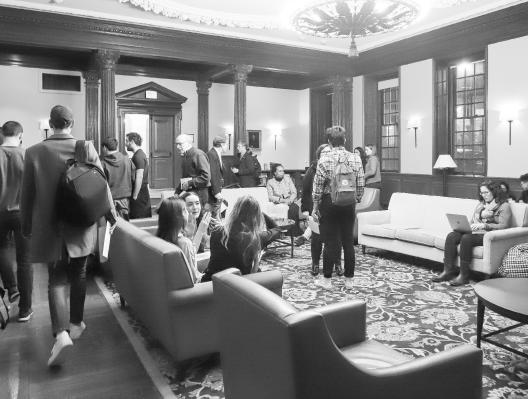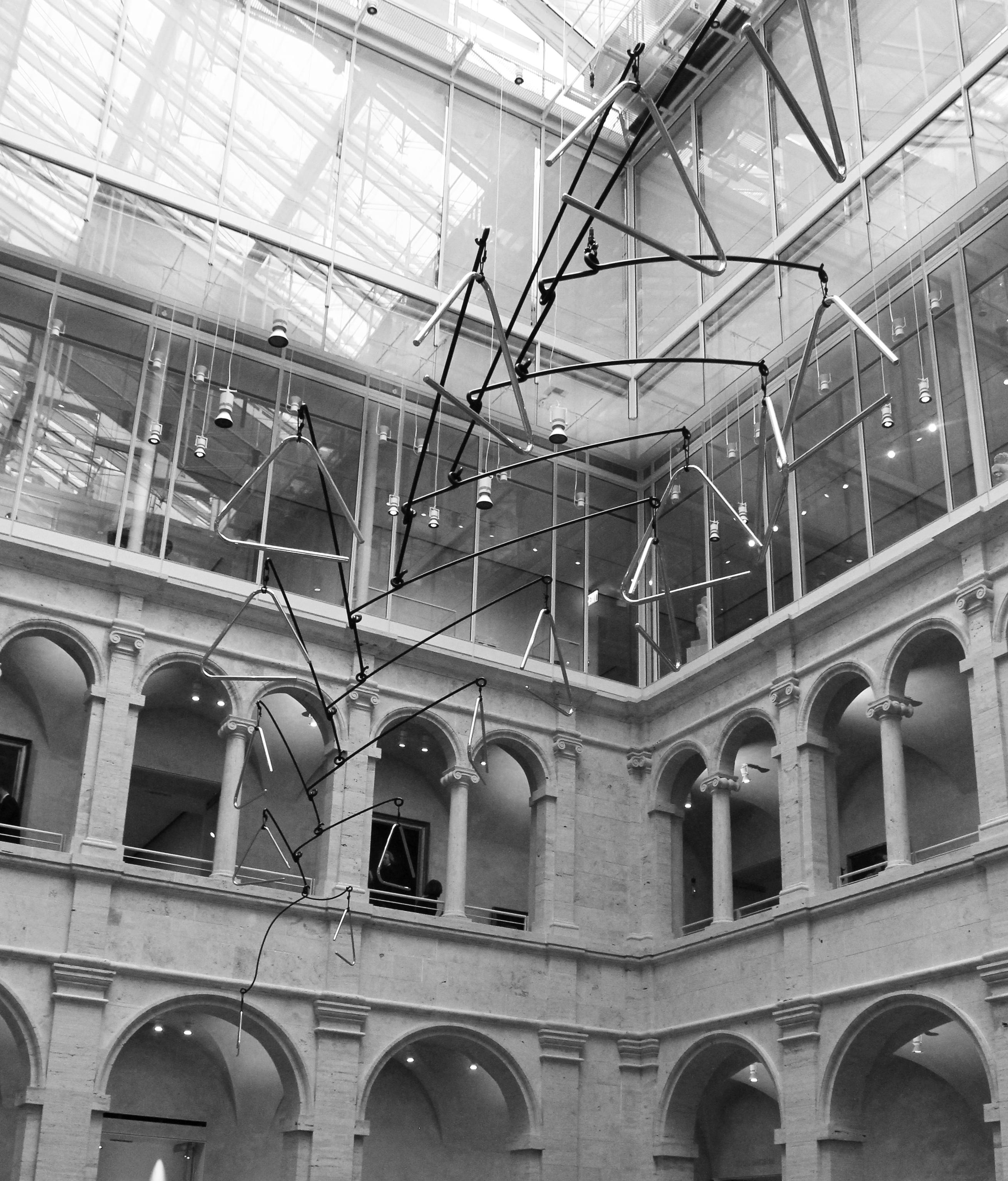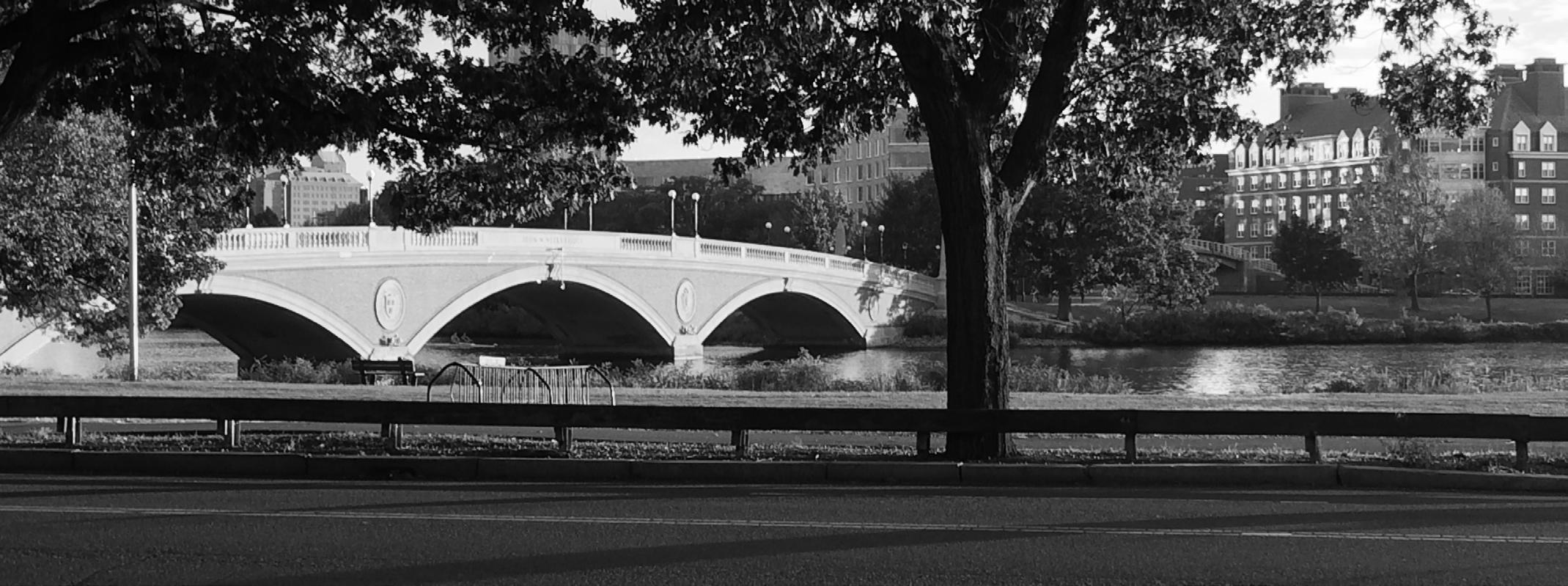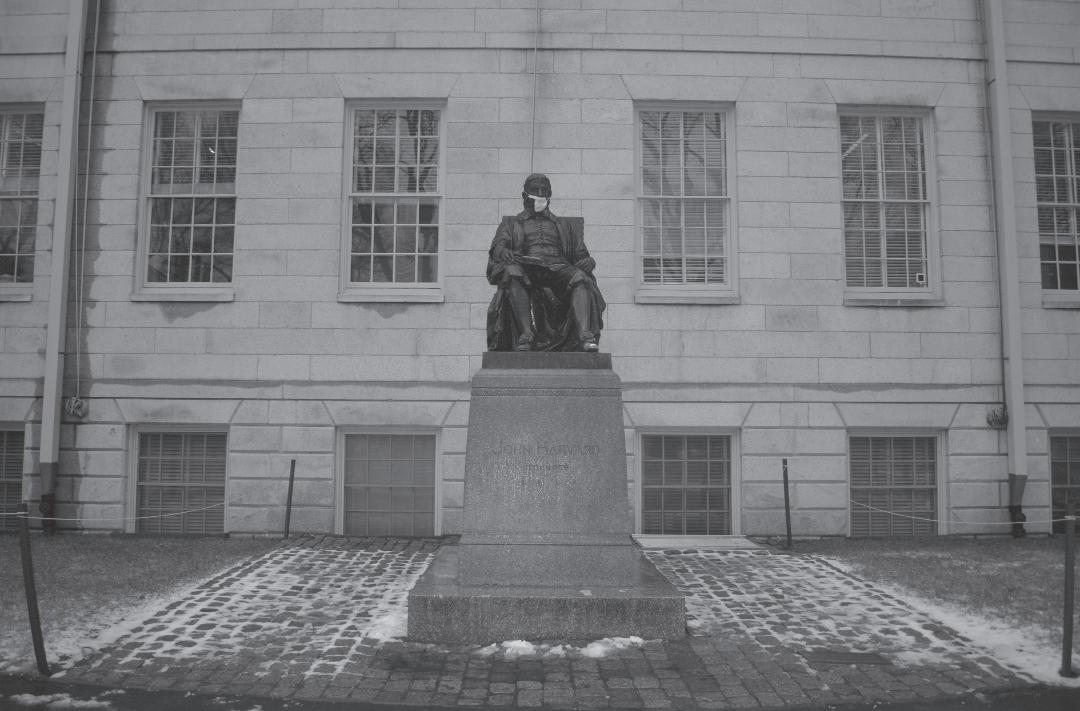
17 minute read
News
WINTHROP FROM PAGE 1
Winthrop Town Hall Students Call to Keep Interim Deans
unimportant to them. I really feel that they listen.”
Outside the town hall, some Winthrop students have turned to other forums to advocate for Gearan and Herlihy-Gearan’s selection.
A group of Winthrop residents circulated a petition urging the administration to permanently install the pair as permanent faculty deans.
In response to student questions about Gearan and Herlihy-Gearan’s eligibility for the permanent position, Dingman pointed to a College requirement that faculty deans hold a tenured professorship, preferably in the Faculty of Arts and Sciences.
“It’s been an understanding that the stronger, more permanent faculty we can attract, then we can have this five-year initial term renewable for another five years. With tenure, you’re sure of a role for life,” he said.
“Also, it says something about living and learning in that these houses are not retreats from the academic life of institutions but are led by senior faculty members.”
Hartman said the College should prioritize a faculty dean’s ability to make a house feel like “home” over “academic prestige.”
She also argued that Gearan’s role as the director of the Institute of Politics — which primarily engages with undergraduates — equips him to connect with Winthrop residents intellectually.
Winthrop tutor Benny Goldman said Gearan and Herlihy-Gearan’s attentiveness to student interests is reflected in the number and diversity of faculty members they have invited to speak with students in the house.
“Mark and Mary have fostered an incredible environment that students who have a variety of interests can thrive in,” Goldman said.
“Even though they’re not tenured faculty, they still know what’s going on broadly and what the students are interested in and they’ve done a fabulous job facilitating events around that.”
College spokesperson Rachael Dane wrote in an emailed statement that Gearan and Herlihy-Gearan were announced as interim deans who would serve only for the year, referring to an announcement made in the fall about the impending search for new deans.
The College will soon convene a search advisory committee for new deans. Thimba said during the discussion that the College hopes to conclude
CLASSROOM FROM PAGE 1 Out of Funds, Classroom to Table Suspended
to get to know them,” Kane wrote.
“I hope they bring the program back. In the meantime, I am still inviting students to lunch but, sad to say, on a Preceptor’s salary, it is not easy,” he added.
Dane wrote in an email that Classroom to Table is a “valuable program” and added that the College sees “high participation rates” as indicative of student and faculty interest.
Melody Wang ’22 wrote in an email that she was “disappointed” to hear about the program’s hiatus.
“For me, that was one of the few opportunities to closely interact with professors who taught massive lecture classes, and it was such a meaningful experience to connect with these professors on a personal level,” she said. “I hope it will be able to make its return as swiftly as possible,” Wang said.
This fall marked the first semester in several years when the program ran the entire term without stopping.
The program has skyrocketed in popularity since its pilot in 2015, driving administrators to implement increasingly stringent usage restrictions to allow more students to participate.
Starting in spring 2017, the Office of Undergraduate Education set a cap of four meals per student for each semester. In spring 2018, the cap was reduced to the current limit of two meals per student.
But funding issues persisted, leading the College to suspend the program mid-semester for another three straight terms. Classroom to Table has allotted increasing sums of money for outings over the past several years. At the program’s inception, the College subsidized $20 per student per meal, which increased to $25 in 2016 and $30 in 2017.
In the past, the College has repeatedly declined to disclose funding sources for the program.
Senior Gift — an initiative encouraging graduates from each class to donate to financial aid in addition to an “unrestricted fund” — has contributed to the program’s funding in the past.
An Office of Undergraduate Education website notice invites Harvard affiliates to share suggestions with the review committee via email.
joshua.fang@thecrimson.com
Winthrop House affiliates gather for a town hall on faculty dean search in the Winthrop Junior Common Room on Wednesday. AMANDA Y. SU—CRIMSON PHOTOGRAPHER

its search by the end of April and announce the new faculty deans before the summer. In addition to Winthrop, the College will also fill faculty dean posts in Quincy, Kirkland, Cabot, and Eliot before the year is out.
amanda.su@thecrimson.com
The T closes. We don’t.

Breaking news, 24/7.
The Crimson thecrimson.com
‘Allston Yards’ Development Project To Move Forward
By ARVIN HARIRI and TAYLOR C. PETERMAN CRIMSON STAFF WRITERS
Boston city planners are moving forward with the development of “Allston Yards,” a sprawling building complex located in the Allston-Brighton area, after approving the project Dec. 12.
Located at 60 Everett Street, the complex includes four buildings, scaling at a gross floor area of 1.2 million square feet.
The space will encompass 868 housing units — 148 of which are low-income units — as well as a supermarket, office spaces, and retail stores.
The Boston Planning and Development Agency, the zoning authority in the Boston area, cast the vote to approve the project.
Critics of the plan urged BPDA to delay the vote so that parties involved could further negotiate over the number of affordable housing units, homeownership opportunities, and community benefits associated with the complex.
Still, the vote was passed unanimously on the original date.
Boston City Councilor Elizabeth Breadon, who was among those who advocated for a delay, said she is nonetheless optimistic about the project’s potential benefits for residents — including Harvard affiliates.
“We want projects to be affordable, be energy efficient, and offer opportunities for local small businesses,” she wrote in an emailed statement to The Crimson.
“We need these projects to have well-thought-out access to public transit so that we can lower our dependence on cars. We are hopeful residents of Allston, including Harvard students, benefit from additional businesses and an improved public transit system.”
Some residents said they had hoped the project would include more affordable housing. “They’re only sitting at 13 to 17 percent margin of affordability,” Allston resident Timothy F. McHale said. “We’d like the city to do better.”
“Twenty percent for all developers, so that’s kind of our mantra,” he added.
McHale also said he wished the development would bring more community benefits.
“Our dear University has negotiated with the city and the neighborhood a factor of about $40 to $50 per square foot of community benefits. That is what I’d like to see all projects,” he said. “By our reckoning, the Allston Yards project is coming in at about half that.”
Anthony P. D’Isidoro, who serves as president of the Allston Civic Association, said he views the development as a “missed opportunity” for a “real win-win situation” between residents and the developer.
“We were hoping to have 20 percent of the units affordable,” he said. “They started off with The Allston Yards redevelopment will create a new neighborhood in the Allston-Brighton area in place of the current shopping complex. JENNY M. LU— CRIMSON PHOTOGRAPHER

the minimum 13 percent and then, through the long community review process, they eventually revised it up to 17 percent, but never got quite to the 20 percent.”
D’Isidoro also said he wished the project would provide more opportunities for homeownership.
“We kind of feel like the homeownership rate is so low and we try to encourage developers to do more homeownership opportunities,” he said. “We were hoping that half would be rental and half would be condo.”
BPDA spokesperson Molly McGlynn wrote in an emailed statement that the proponent had decided to increase its contribution to the Allston Brighton Homeowner Fund to $4 million “in response to community feedback.” “This fund will help to fund down payment assistance, homeownership programs with affordability components, home repair loans and/or Homebuyer 101 classes for income qualified individuals and families to support ownership housing availability, affordability and stability,” she wrote.
D’Isidoro said he and other Allston residents plan to continue to voice their concerns as further developments enter the neighborhood.
“The community continues to fight for more homeownership opportunities, for greater affordability than the minimum that the city requires, for deeper affordability where we can get homeownership,” D’Isidoro said.
arvin.hariri@thecrimson.com taylor.peterman@thecrimson.com
FEUD FROM PAGE 1 Dershowitz and Tribe Publicly Spar Over Impeachment
‘ELECTRIC AND BRILLIANT’ While Dershowitz and Tribe may disagree about the merits of impeaching Trump, they share at least one thing: a resume littered with prestigious accomplishments.
A Brooklyn, N.Y. native, Dershowitz graduated from Brooklyn College and Yale Law School before joining the Harvard Law School faculty at age 25.
Touted as “the best-known criminal lawyer in the world” and “America’s most public Jewish defender” in his Law School biography, he has defended high-profile and controversial clients such as billionaire and accused sex offender Jeffrey Epstein and football star O.J. Simpson.
Law School professor Charles Fried said in an interview Wednesday that he considers Dershowitz an intelligent scholar.
“He was always considered an electric and brilliant teacher of criminal law just right from the very start,” he said.
Tribe, a graduate of both the College and the Law School, began teaching at Harvard in 1968. He helped write the constitutions of South Africa, the Czech Republic, and the Marshall Islands, and holds the title University Professor — considered Harvard’s highest academic honor for faculty.
Though the two professors never worked together directly on campus, both described their relationship prior to Dershowitz’s retirement as professional and good-natured.
“I wouldn’t say we were close friends, but we were certainly friends,” Tribe said.
“I proposed him to President Clinton for Solicitor General of the United States,” Dershowitz said. “I’ve always had respect for his ideas.”
Before recent events, Tribe said he and Dershowitz had just one prior dust-up. While both teaching at the Law School in 1992, the two professors disagreed about the appropriateness of a Harvard Law Review “parody” of a colleague’s deceased wife. Tribe said he wanted the Law School to note the incident on the transcripts of the students who wrote the article; Dershowitz argued against censuring them.
“Ever since then, we’ve been a little distant because he thought he is the only pure civil libertarian around and that I was one of the compromised ones, and one of the things that is most kind of difficult to deal with about Alan is how he thinks that he’s the only principled person around,” he said.
The 1992 argument, however, was just a preview of events to come.
‘FUNDAMENTAL DISAGREEMENT’ Though Tribe said he and Dershowitz have had some previous differences of opinion, their arguments have become increasingly public amid the impeachment debate.
In both his formal defense of Trump and online, Dershowitz claimed that the charges brought by the U.S. House of Representatives against Trump are not impeachable offenses according to the Constitution. He said the Constitution does not explicitly include the terms used to describe the charges and that its authors would not approve of them.
“My views are that impeachment cannot be based on vague, open-ended terms like ‘abuse of power’ and ‘obstruction of Congress,’” Dershowitz said. “Those terms can be applied to almost any president, and they’re dangerous.”
Tribe said that — even if the House’s language contains ambiguities — the impeachment trial should rest upon Trump’s actions rather than linguistic questions.
“Obviously, that phrase in itself has a degree of vagueness and ambiguity, but that’s only the label of the impeachment charge,” Tribe said.
“In order to determine whether someone has been charged properly with impeachable offenses, one has to look at the specific conduct that is claimed.”
“It seems that my former colleague has this view that ‘abuse of power’ is not a permissible category of impeachable offense, which couldn’t be farther from the truth,” he added. “Abuse of power is the characteristic impeachable offense.” Following Dershowitz’s testimony before the Senate, several legal experts joined Tribe in countering his arguments. Renato Mariotti, a former federal prosecutor and CNN legal analyst, compared Dershowitz to opponents of the climate change movement.
“Dershowitz’s view of what constitutes an impeachable offense is as indefensible and rejected by scholars as climate deniers,” Mariotto wrote in a tweet on Wednesday. “Not a single constitutional scholar agrees with his view.”
Michael J. Gerhardt, a law professor at the University of North Carolina who specializes in conflicts between Congress and the President, disputed another aspect of Dershowitz’s claim.
“Professor Dershowitz made what I think was a very bizarre argument about if a president believes something’s in his purse — if he believes that what he’s doing is in the nation’s best interest — he apparently can do anything he wants, and that strikes me as completely wrong,” Gerhardt said.
But Tribe said his concerns about Dershowitz’s arguments stretch beyond impeachment. “My fundamental disagreement with Professor Dershowitz is that if his view were to prevail, the country would be fundamentally at the mercy of future presidents who want to use their official powers in order to benefit themselves and corrupt our elections and ensure their reelection,” he said.
‘SCHOOLYARD EPITHETS’ Dershowitz and Tribe have disagreed about Law School issues and constitutional questions. But the duo have also criticized one another personally in tweets and interviews. “Tribe so afraid of the Senate hearing my constitutional arguments that he actually says, I ‘should not be allowed’ to make them. Is that the American way?” Dershowitz wrote on Twitter on Jan. 20.
“The @AlanDersh Narcissist defense puts even the Twinkie defense to shame,” Tribe wrote on Jan. 30, referencing a controversial legal argument made while Dan White faced trial for the murder of former San Francisco mayor Harvey Milk.
Dershowitz claimed the dispute has been largely one-sided, charging that Tribe made legal arguments personal.
“Tribe decided to engage in personal ad hominem attacks on me and my ideas,” Dershowitz said. “He characterized my legal conclusions as ‘bonkers’ and ‘crud, C-R-U-D’ despite the fact that they are supported by 19th-century scholars, justices, former justices, and lawyers.” Tribe countered that claim: he alleged Dershowitz has told multiple reporters that Tribe is jealous of him.
“Nothing could be further from the truth,” Tribe said. “The person I would least like to be on our faculty is Alan Dershowitz.”
In a bid to move their arguments from Twitter, Dershowitz said he hoped to engage Tribe in an in-person debate over the law.
“I challenge my friend and former colleague, Larry Tribe, to an academic serious debate about these issues — about what the constitutional grounds for impeachment are, what the framers intended — and I hope you will accept my challenge instead of, you know, juvenile name-calling and schoolyard epithets,” Dershowitz said.
At least one student who knew both Tribe and Dershowitz said comparing the pair’s arguments is fruitless.Political commentator Elie Y. Mystal ’00, a graduate of the Law School, wrote in an email that the two professors engage in entirely different lines of work.
“It’s like comparing an astrophysicist to a zoologist,” he wrote. “They’re both technically scientists, but if you just go to random office hours in the Science Center asking “when will we die” you’re going to get very different answers.”
kelsey.griffin@thecrimson.com
The sights and sounds of Harvard.

The Crimson @crimson_photo
HKS Student Introduces Gender Pronoun Stickers
By SIXIAO YU CRIMSON STAFF WRITER
Diego A. Garcia Blum, vice president of diversity in the Harvard Kennedy School student government, introduced the optional use of gender pronoun stickers on nametags and placards as “a welcome signal” for transgender and nonbinary students at HKS.
Garcia Blum explained the decision to introduce the pronoun stickers in a Jan. 31 email he sent to HKS faculty and staff. “Often people assume what pronouns other people use by how a person looks like, but this can lead to mistakes that can hurt and exclude people,” he wrote.
“The use of visible pronoun stickers is a welcome signal to our trans and gender nonconforming students to be their full selves in any space in our school,” he added.
Garcia Blum said in an interview that he believes the stickers can serve to educate HKS students, faculty, and staff on pronoun usage.
“There are a lot of people here from the Kennedy School who — this is something completely new to them,” he said. “If you’re unsure about the pronouns somebody may use, it’s okay to ask. And if you see somebody that has something like gender nonbinary pronouns, you know, it’s something that you understand, and you can address them correctly.”
Garcia Blum further talked about how gender identity issues are “something that Harvard, overall, needs to do
Diego A. Garcia Blum HKS Student Government Vice President of Diversity
better at.”
“I don’t see any other place that has pronoun stickers or pronoun markers on the placards,” he said.
Morgan R. Pratt, a student at HKS, wrote in an email that, although they do not personally use the stickers, they appreciate the significance of the gesture. “I identify as non-binary because gender is not important to me--putting a sticker right next to my name ironically feels like it would make gender a disproportionately prominent part of my identity,” they wrote. “That being said, I was very proud to see the activism around pronouns here at HKS. It makes me feel more respected in a sea of people otherwise ignoring or opposing the issue.”
HKS Dean Douglas W. Elmendorf wrote an email to The Crimson noting the school administration’s support for the stickers.
“We thought that our students’ idea to introduce these stickers was a great way to help make every student feel fully welcome at the Kennedy School, so we ensured that the message announcing the stickers went to all of our faculty and staff as well as all of our students,” he wrote.
The small stickers — with phrases like “My Pronouns Are: He/Him” — are located in bins in a student lounge near room 309 in the Kennedy School’s Ofer building.
sixiao.yu@thecrimson.com
CAMPAIGN FROM PAGE 1 Harvard Places Second in Total Annual Fundraising
Hopkins’s funds came from former New York City mayor and current Democratic presidential candidate Michael R. Bloomberg, an alumnus of the school.
In Nov. 2018, Bloomberg pledged $1.8 billion to Johns Hopkins to help fund scholarships for low- and middle-income students.
The donation enabled the school to adopt need-blind admissions practices and remove loans from financial aid packages.
The gift is the single largest donation on record to an American academic institution.
Even excluding the gift from Bloomberg, Johns Hopkins raised $900 million, a figure that would have placed it just behind Harvard and Stanford, which raised $1.4 billion and $1.1 billion, respectively.
Thomas D. Parker ’64 — a senior associate at the Institute for Higher Education Policy — said he was impressed with the amount that Johns Hopkins raised, given its number of graduates.
“In that top ten, most — not all, but most — of the institutions have very large numbers of graduates, and you have to have very large numbers of graduates to generate very large amounts of money,” Parker said. “Hopkins deserves a lot of credit. They’ve done a great fundraising job.”
Despite its ten-figure fundraising totals, Parker said that Harvard’s fundraising intake still falls short of ideal, given its annual budget.
Operating expenses at the University totaled $5.2 billion in fiscal year 2019, per its yearend financial report.
“They’re not even raising their annual budget, and if you look at it that way, it’s not a very big number,” Parker said. “You sort of wish that number were larger.”
University spokesperson Christopher M. Hennessy did not immediately respond to a request for comment.
Donald M. Fellows, a senior fundraising consultant at Marts & Lundy, emphasized that all donation numbers are relative. “It’s all relative to the type of institution, the size,” Fellows said. “The budget for a massive research university like Harvard, Stanford, MIT, they’re huge, compared to a lot of other institutions or organizations.” He cited costs ranging from financial aid, recruitment of high-caliber faculty, and facilities maintenance and upgrades. “It’s relative to the nature of these institutions. They are very, very expensive,” Fellows said. “The cost factors are huge. That’s what tends to drive the larger gifts, and the greater need of those institutions to raise more money.”
Overall, colleges and universities raised nearly $50 billion in the last academic fiscal year — the highest level ever reported. This marks the tenth consecutive year that total academic fundraising has grown, per the council’s report.
Still, Parker said he believes the fundraising levels are concerning.
“None of the major fundraising universities in the country are doing enough. All of them are still kind of running scared,” Parker said.
“I know that seems counterintuitive because those numbers look so big, but the costs are big as well.”
ellen.burstein@thecrimson.com camille.caldera@thecrimson.com
The latest on music, film, theater, and culture.





